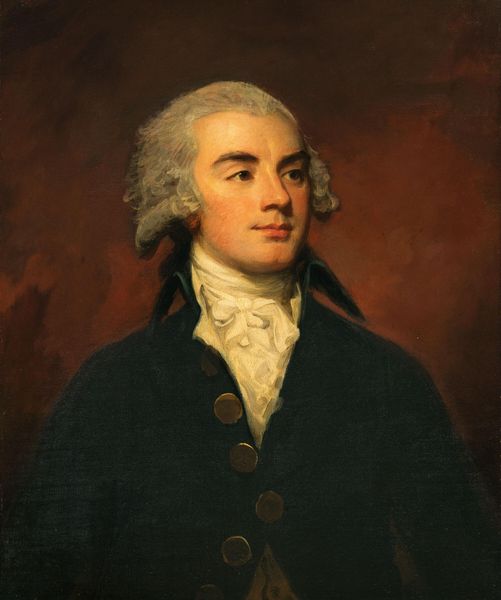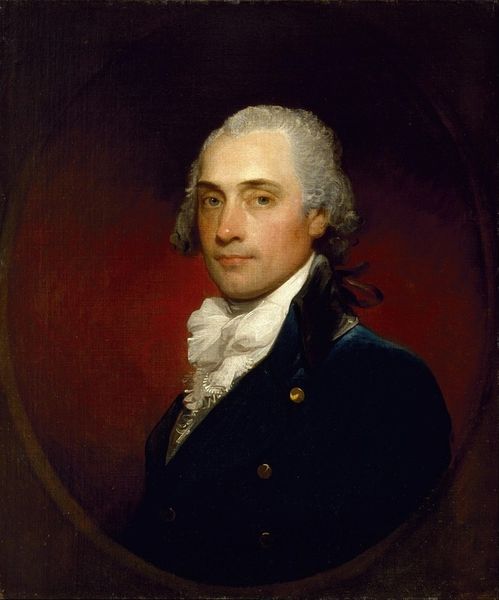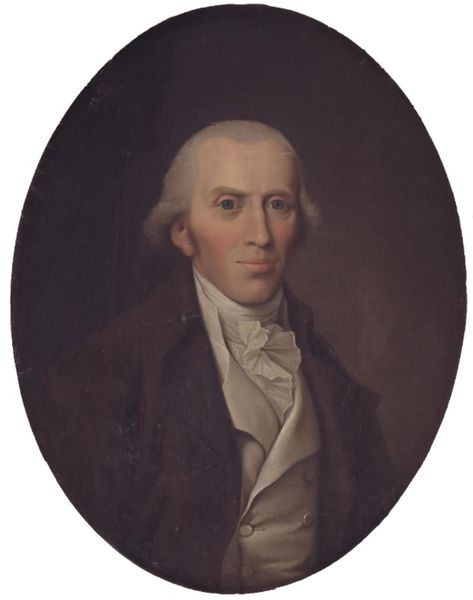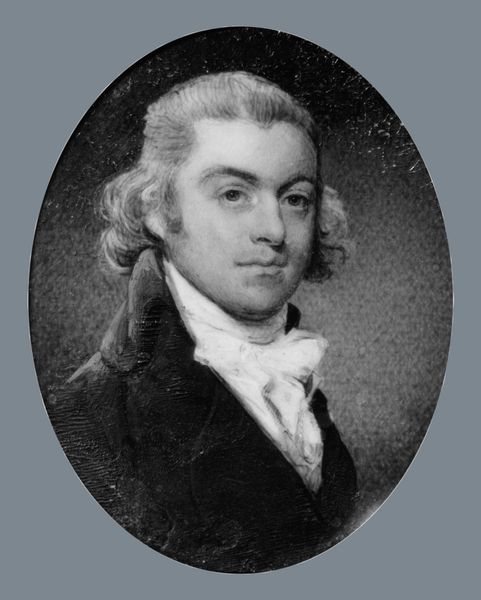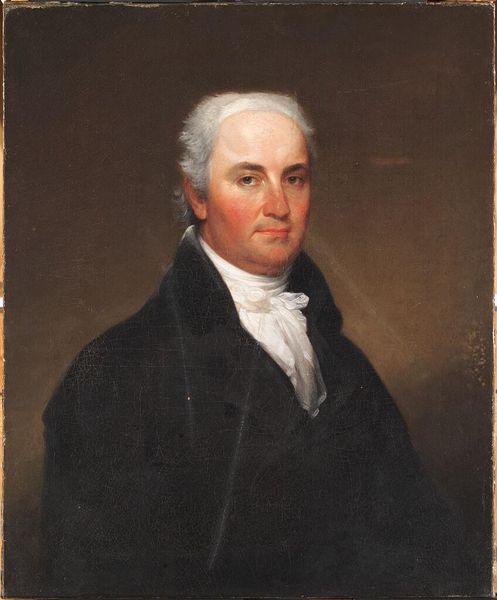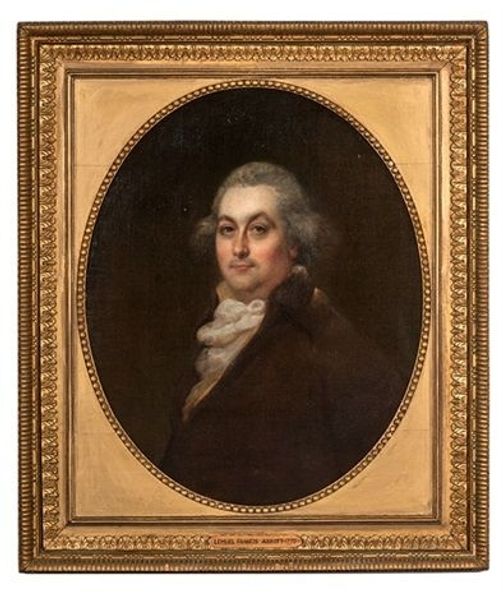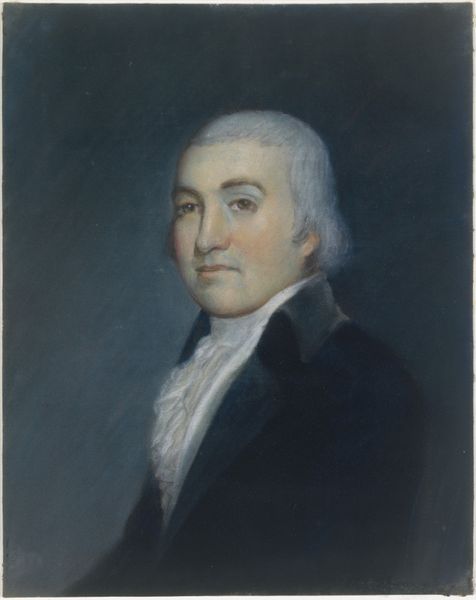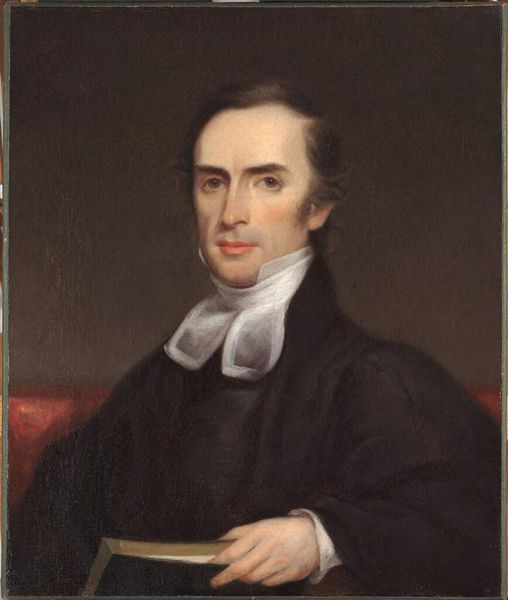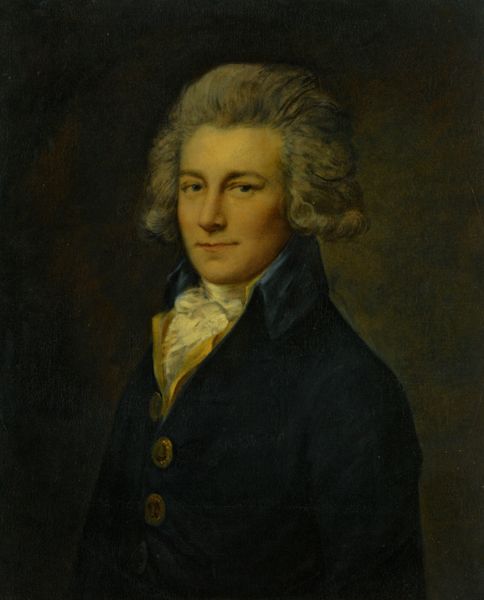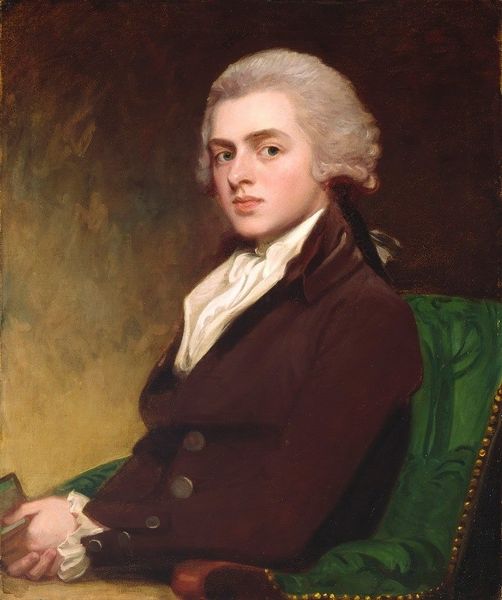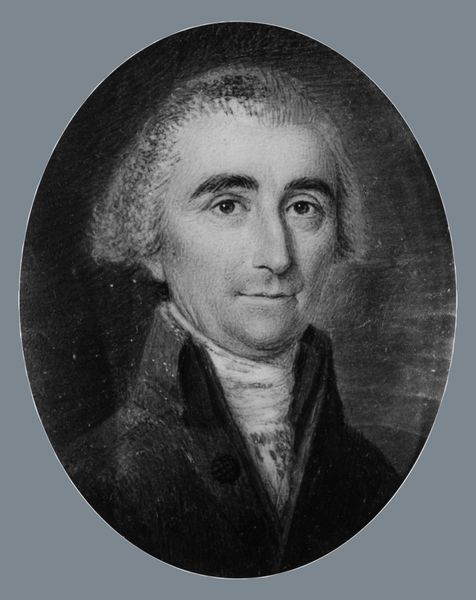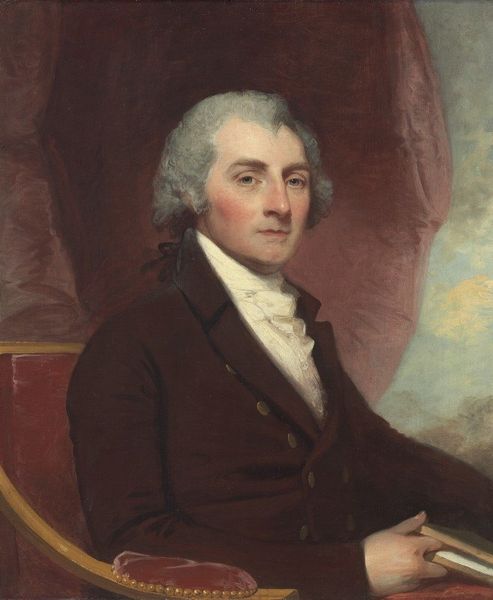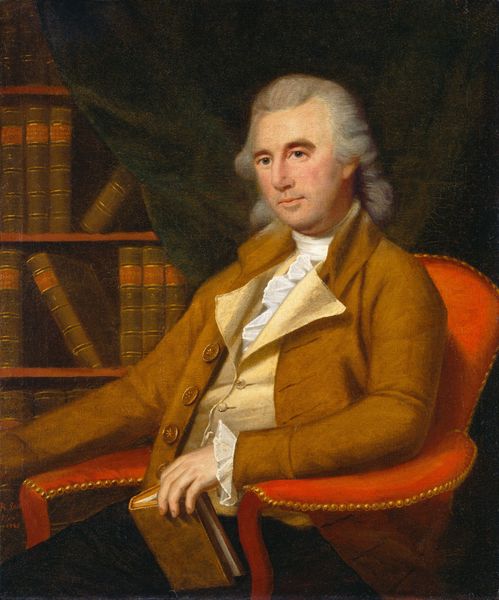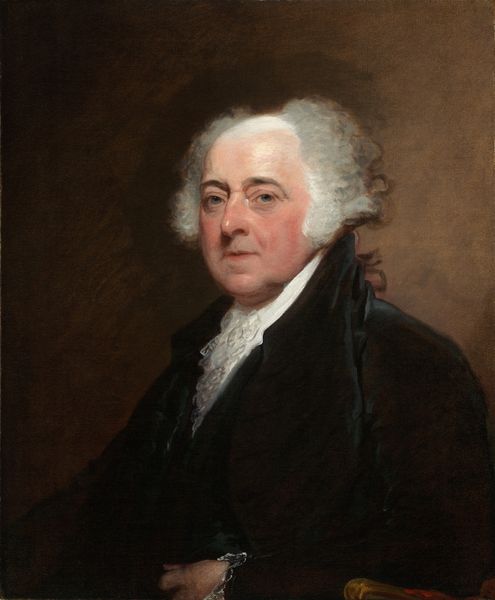
painting, oil-paint
#
portrait
#
neoclacissism
#
painting
#
oil-paint
#
romanticism
#
history-painting
Dimensions: 76.2 x 63.5 cm
Copyright: Public domain
Curator: Let's turn our attention to John Singleton Copley’s portrait of John Quincy Adams, painted in 1796. A pivotal year, especially considering the shifting political landscapes and the rise of a new nation. Editor: The subdued palette strikes me immediately. Browns and blacks are dominant, which creates a somber and reserved mood. Yet, the subtle handling of light draws me to the subject's face. Curator: Absolutely. The context is essential. Copley was navigating a world where patronage and political alignment heavily influenced artistic opportunities. His shift toward painting prominent American figures signifies that transition. Note, he produced this oil on canvas at a time when the nation was on the brink of huge expansion, necessitating strong trade relations. Adams worked in these, mostly through diplomacy and the creation of free trade agreements. Editor: I agree; the limited palette evokes the stoicism often associated with the early Republic. It's interesting how Copley uses light and shadow to mold Adams's face, emphasizing his intelligence and determination. Consider the brushstrokes, so refined, particularly around the eyes and mouth. The atmospheric landscape behind Adams introduces an interesting compositional element. Curator: True. Landscapes were often deployed to symbolize progress and the nation's expansion, which were made possible through diplomacy as opposed to constant warring. Here, Adams is being subtly framed in this way as well. The very tools used to make this painting speak to the material reality: oil pigments, canvas made from cotton, likely harvested by enslaved people... all contribute to this picture. Editor: Materially, the canvas itself, carefully prepared, would provide the base for Copley’s skillful application of thin glazes of paint and precisely positioned shadows. Observe how Copley skillfully constructs the scene and invites our engagement. The texture itself, the artist's touch, carries meaning. Curator: Indeed. By meticulously layering and blending paint, he builds the figure of Adams in layers of visual history. It reveals his artistic decisions to shape this man into what we see as worthy of national admiration, using art and aesthetics as subtle yet powerful forces. Editor: I leave this artwork thinking about the balance of form and shadow and how that communicates the intellectual gravity of the man in frame. Curator: I concur. Examining its historical setting reminds us of the intertwined roles of art, politics, and labor during a formative era.
Comments
No comments
Be the first to comment and join the conversation on the ultimate creative platform.
